

Shout-out to Shochu
|
Most people have heard of and are fans of sake, but what about shochu? Shochu is a traditional Japanese distilled liquor, and it generally refers to honkaku shochu and ko-rui shochu. The latter is mainly made from various cereals and molasses and is distilled several times, resulting in it being flavourless and odourless. The former is only distilled once and retains the flavour and aroma of its ingredients. Thus, it is also the more favoured and “authentic” shochu.
It has an approximate history of 500 years, which is deeply rooted in southern Kyushu. In fact, Kyushu is known as “the kingdom of shochu” and Miyazaki prefecture has the highest production of shochu in Japan. There are various theories as to how the basic distillation technique came to Japan. However, it is considered to have arrived at the southern islands in the 15th century through ancient trade routes. Official foreign trade documents from the Ryukyu kingdom (Okinawa) reflect gifts of distilled liquor from countries such as Siam (Thailand) and Korea. Thus, it is believed that the distillation technique was brought along at the same time. A Portuguese merchant noted in his report from 1546 that people were drinking a spirit made from rice. Besides that, the oldest domestic record of shochu comes from a written complaint of a Kagoshima carpenter about his employer in 1559, “the head priest was so cheap that he never offered us shochu.” Shochu is comprised of three core ingredients, including a base starch, water and koji (malted rice). While the base starch ingredient for shochu was initially rice, it eventually branched out to other more readily available products. One of today’s most popular base ingredient, sweet potatoes, first came to Okinawa through trade in early 17th century. It eventually found its way to Kyushu in 1705, and quickly spread across the region. Other more common base ingredients include barley, buckwheat and brown sugar. Either way, Kyushu’s warm climate and fertile soil served as ideal conditions for these raw ingredients. Over the years, the production process of shochu became more refined. For example, the use of black koji and white koji to help stabilise the volume and quality. However, shochu had the image of being a cheap drink for the lower class up till the 1960s. It was only in the late 1970s and early 1980s, that the lighter-tasting barley shochu became popular outside Kyushu and shochu experienced a nationwide boom. The second time was in the early 2000s, when more unique flavours took the spotlight. With over 50 base ingredients, shochu can have many different flavours. For Miyazaki in particular, it produces a diverse range due to its topography. Sweet potato shochu is more popular in the southern area, whereas rice and buckwheat shochu is more popular in the northern area. In fact, buckwheat shochu was first created in Miyazaki in 1973, and the prefecture is now its top producer. In addition, many have pointed out the health benefits of shochu. Compared to sake, shochu is said to have less calories, be less likely make people drunk and give hangover symptoms. It is also said to increase the production of enzymes that break down blood clots in veins and arteries, hence lowering the risk of heart attacks and strokes. If you wish to have something with lower alcohol content, why not try shochu? It should be noted that the abv (alcohol by volume) for Miyazaki shochu is usually 20%, unlike the majority, which is 25% abv. So among all the shochu, Miyazaki shochu may be a great choice to start with! |
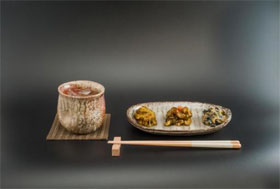 © photoAC 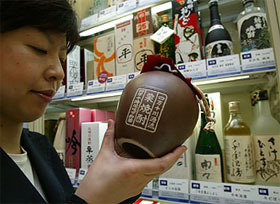 © Jiji 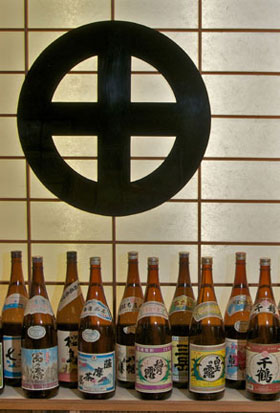 © Web Japan 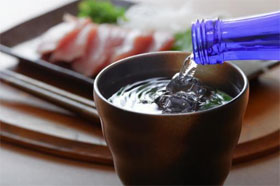 © photoAC 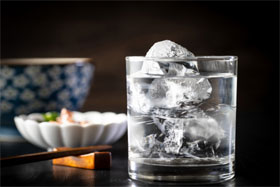 © Web Japan |
Resources
|
“Here’s to Shochu: Traditional Liquor Establishes a Loyal Following”. 2003. Web Japan. Accessed 18 April. https://web-japan.org/trends/business/bus030924.html. Miyazaki, En. 2018. “Honkaku Shochu”. Miyazaki Prefecture Tourism Association. https://visitmiyazaki.com/explore_miyazaki/honkaku-shochu/. “Honkaku Shochu and Awamori”. 2023. Japan Sake and Shochu Makers Association. Accessed 18 April. https://honkakushochu-awamori.jp/english/. Bouwers, Kirsty. 2020. “Kirishima Shuzo: The Kyushu Distillery in Miyazaki That’s Been Making Shochu Since 1916”. Tokyo Weekender. https://www.tokyoweekender.com/2020/03/kirishima-shuzo-the-kyushu-distillery-in-miyazaki-thats-been-making-shochu-since-1916/. |
|
Japan Creative Centre 4 Nassim Road, Singapore 258372 +65 6737 0434 / jcc@sn.mofa.go.jp https://www.sg.emb-japan.go.jp/JCC/ Nearest parking at Orchard Hotel & Delphi Orchard |
 |